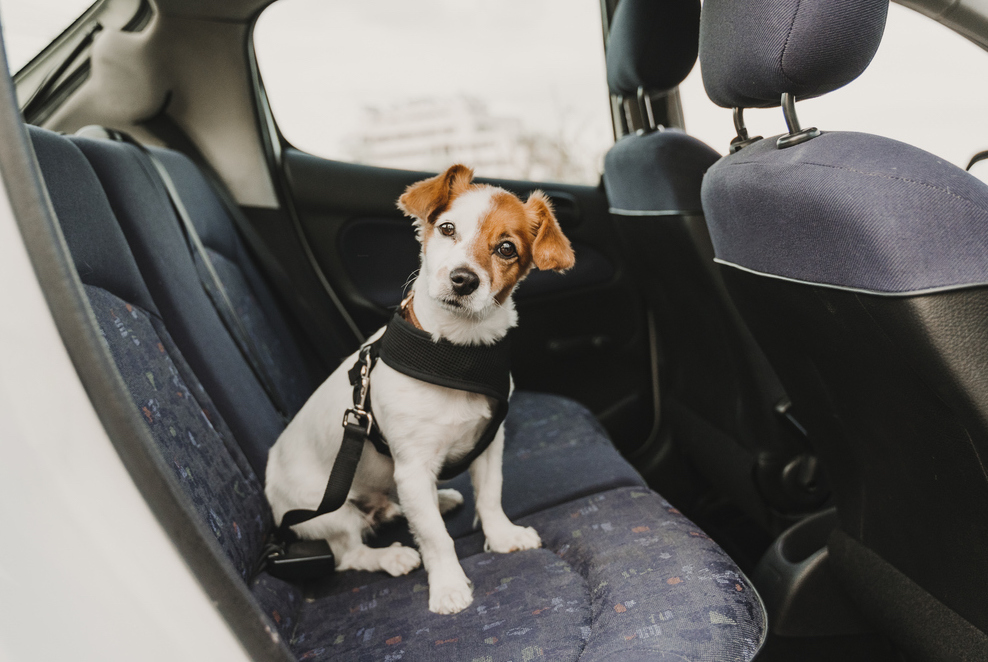
Dogs are always on the move. Sometimes they’re visiting the local hardware store, the groomer, or venturing beyond their usual spots. They may be enjoying lengthy car rides to the ocean, a mountain getaway, or visiting their friends - human or otherwise. Our furry sidekicks are going on more car rides now than they ever have.
Pet parents enthusiastically include their furkids in anything and everything they can. Thankfully a growing number of pet moms and dads are taking measures to ensure their little ones are safe and secure when taking road trips.
“The most important thing you can do to ensure pets safety when traveling is to properly secure them in the car.” TripsWithPets CEO/Founder, Kim Salerno says. “And a pet seat belt is at the top of the list.”
The risks of pets roaming free in the car
In the past, the majority of dogs have traveled unsecured in the car. Some humans may have a hard time believing this, especially when they hear that some dogs sit on the driver’s lap while the car is moving. “Free range” pups can very quickly distract their drivers. Another thing that’s fairly common is allowing dogs to ride with their head (and sometimes paws, or more) out the window. It may not be obvious to everyone, but these are harmful practices. If there was a car accident at a speed of 35 miles/hour, an untethered 60 pound dog suddenly becomes a terrifying 2,700 pound projectile.
What’s more, after an accident, if your pet is not secured in the car, they will be frightened and may run out of the car. Running away in a traumatized state may lead to your precious pet getting lost or even worse - getting injured by an oncoming vehicle.
The basics of buckling up your pet
Securing your pet with a pet seat belt is the best way to ensure your pet is safe while traveling in the car.
Most pet seat belts work in tandem with the strap or seat belt buckle already in your car. These safety devices have been made to secure your pet if there is an accident or the car stops suddenly.
Seat belts for pets are a combination of a specific tether and a harness. One end of the tether latches on to your pet’s harness. The other end of the tether connects to the vehicle’s seat belt buckle or strap. This secures your pet to ensure her safety.
It’s important to attach the seat belt hitch to her harness and never the collar. More “durable” pet seat belts include a harness that is typically more secure than a standard harness meant for walking. You can of course use your own harness, you’ll just have to get a tether to connect it to your car’s seat belt. No matter what route you go for pet seat belts, choose one that has been safety tested. Doing that research is in your and your pet's best interest.
Very importantly, although your dog is your co-pilot, make sure she is “buckled up” in the back seat.
Comfort is the key to success
If this will be the first time your pet has worn a harness, it's best get her comfortable wearing it before starting your journey. Place the harness on your pet while in your home and/or while on a walk to help her get used to the feeling of it. After she’s comfortable, you’ll want to set her up in the car with the new pet seat belt. To help the process go smoothly, begin with short car rides before going on a lengthy ride or road trip.
The bottom line
The bottom line is that with a little bit of planning, you can save your pet’s life – and have peace of mind knowing that your pet is safe and secure. You secure yourself and your human family members - why not your pets?
Looking to book a trip with your pet? Start planning your trip. Need help? Give us a call at 919-249-7387 or email us roadtrip@tripswithpets.com.
Author: Lenny Kompara
Photo credit: istock/Eva Blanco